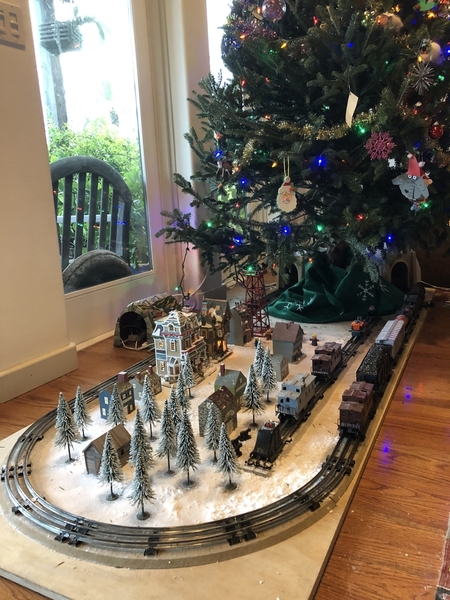Hello--
It's that time of year where I pull down the 1950s Lionel trains that previous generations bought new from a long-closed "model train & vacuum cleaner" shop in the area where I grew up. The 682 has been problem-free for a few years, and in fact it ran @200 times around the oval layout this week until this morning...
The first thing I did notice when I set everything up last weekend was that the 682 wasn't quite the prolific smoker it had always been, and the previously perfect, tall wafting "O's" just weren't quite there. I put a pill in the smoker last week (it's one of the dual pill or drops type smoke unit) and the smoke was so-so, and only lasted for a relatively short time. This morning I put a few drops of smoke fluid in, and coincidentally (or not) after a few times around the oval, it came to a complete stop under the tunnel area. Odd.
I then removed from the track all the trains it had been pulling, and while the motor would hum when I bumped up the voltage on the ZW, it would not move. I then manually rolled the wheels of the 682 and put a few drops of oil at the axle area of the 8 main drive wheels. I'd also noticed more sparking than normal at the rollers/center rail, so I went around the track with the special Lionel "track eraser" just as I had done last weekend. The train then ran fine, so I reattached the consist.
Though I still noted sparks underneath the 682, it completed about 15 laps around the oval until once again it came to a halt under the tunnel. It started again, but then stopped half-way around the track.
At that point I took my other engine--a 681--out of the closet and swapped it out with the 682. I instantly observed the 681 had only very minimal sparking at the rollers, was puffing thick billowing smoke from whatever was left in the smoker from last season, and pulled around the track much stronger than the 682. In fact, I noted that the 681 pulled the consist at about 13 volts on the ZW that the 682 had at 16 volts.
Any ideas as to what may be going on with the 682?
Thank you!






